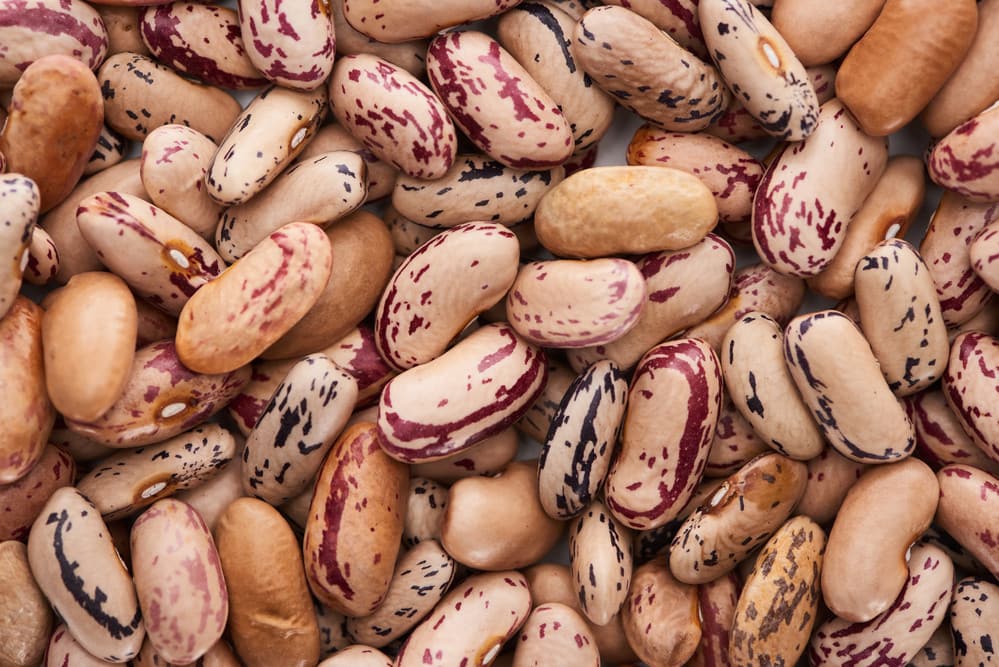Walk down the bean aisle of any grocery store and you’ll likely spot the familiar pebbled pink speckles of pinto beans peeking out of sacks and cans. Along with black and kidney beans pintos reign as one of the most popular varieties in the Americas. But besides making a mean pot of chili, what exactly are pinto beans? Let’s peel back the pod on these nutritious legumes.
A Member of the Common Bean Family
Botanically speaking, pinto beans fall under the category of Phaseolus vulgaris, also known as the common bean This includes many types like kidney, black, cannellini, navy, great northern and snap beans. Within P. vulgaris, pintos form a distinct subclass of beans bred specifically for their iconic dappled pink and tan coloration.
The pinto bean originated in Mexico and the Southwestern United States. “Pinto” even means “painted” in Spanish, referring to the bean’s splashed coloring. Today, pintos are most plentifully grown in the US, Brazil and Mexico. They thrive in hot, dry climates.
Nutritional Benefits of Pintos
Like other beans, pintos brim with nutrients while remaining low in fat. Just a 1-cup serving packs:
-
10 grams fiber
-
11 grams protein
-
45% daily value of folate
-
15% DV iron
-
15% DV potassium
Plus, pintos contain bioactive compounds linked to improved heart health and balanced blood sugar levels. The high fiber content can support digestive and weight management goals. Beans also produce gut-healthy short-chain fatty acids during digestion.
Research indicates pintos may lower “bad” LDL cholesterol while maintaining “good” HDL cholesterol. Certain plant compounds in beans also exhibit antioxidant effects to help counter cell damage from free radicals.
Preparing Dried Pinto Beans
Pintos are sold dried, canned or pre-cooked. For dried, you’ll need to soak before cooking to rehydrate the beans. Overnight soaking cuts cooking time drastically, but quick soaking works too:
-
For overnight, cover beans with water and soak 8-12 hours. Drain and rinse.
-
For quick soak, boil beans 2 minutes then soak 1 hour. Drain and rinse.
Add soaked beans to soups, stews and chilies. Simmer gently until tender, 1-2 hours. Add spices, herbs and seasonings of choice. You can also sprout pinto beans to use in salads, bowls and more.
Refried Pintos = Mexican Comfort Food
No discussion of pinto beans is complete without mentioning refried beans. Simply mash or blend cooked pintos with oil or lard for quick, nourishing comfort food. Season to taste. Refried pintos classically accompany tacos, burritos, tostadas, enchiladas and more. Consider these easy additions:
- Sautéed onions and garlic
- Diced green chiles
- Mexican oregano
- Cumin
- Smoked paprika
- Chopped cilantro
- Crumbled cotija cheese
- Sliced jalapeños
The possibilities for reinventing the refried bean are endless! Try blending in roasted pumpkin or avocado for a nutrition boost.
Storing Cooked Pinto Beans
Cooked pintos keep 4-5 days refrigerated or 6 months frozen. Let cool 1 hour before refrigerating to prevent condensation. Portion beans into meal-size servings before freezing for quick reheating later.
Canned pinto beans offer similar nutrition to dried in a convenient pre-cooked form. Rinse and drain cans before use to reduce sodium. Check ingredients for additives. Opt for low-sodium or no-salt-added versions when possible.
Creative Ways to Use Nutritious Pintos
Beyond Tex-Mex cuisine, pintos make nutritious additions to:
- Rice bowls
- Burgers and veggie patties
- Soups and stews
- Casseroles and baked pastas
- Salad bars and grain bowls
- Dips and spreads
- Veggie scrambles and omelets
- Hummus
- Falafel
- Bean croquettes
- Bean-based desserts and energy bites
So whether you’re craving down-home chili, a protein-packed rice bowl or quick refried bean dip, the hearty and healthful pinto bean has you covered. It may not be the flashiest legume, but the nutritional profile of this speckled pink bean can’t be beat. Pintos bring classic comfort along with a dose of fiber, plant-based protein and essential vitamins and minerals. Just be sure to enjoy in moderation—and keep the Beano handy!
References:
[1] Geil, P.B. and J.R. Anderson. 1994. Nutrition and health implications of dry beans: a review. Journal of the American College of Nutrition 13:549–558.
[2] Tharanathan, R.N. and S. Mahadevamma. 2003. Grain legumes—a boon to human nutrition. Trends in Food Science & Technology 14:507–518.
[3] Winham, D.M., Andrea M. Hutchins, and Rui Hai Liu. 2007. Pinto bean consumption reduces biomarkers for heart disease risk. Journal of the American College of Nutrition 26:243–249.

Bean Merch Done Right!SHOP NOW
- Contain the most fiber of any bean
- Popular in U.S. Tex Mex and Latin American cuisine
- Favorite bean for making chili
Scientific name: Phaseolus Vulgaris
Growing and harvesting pinto beans, growing pinto beans
FAQ
What type of beans are pinto beans?
Is there another name for pinto beans?
Are pinto beans healthy for you?
Are pinto beans bush beans or pole beans?
